Fit Lesson 3: Shoes.
Posted on July 28, 2009 in Basic Fit Lessons, Fit Lesson, How to Wear a Sport Coat with Jeans., Popular, Shoes.Shoes are very important. Let’s be honest: walking around with the wrong pair of shoes and the right outfit makes you look like an idiot. It can completely kill an outfit. Here’s a mental image: you see a guy suited-up in the perfect suit, shirt and tie combo. Pants with the perfect break and width. Shirt that fit like a glove. Everything fits precisely as they should, but then you get to the shoes. Big clunky things with thick soles. It completely disrupts the lines that the outfit was attempting to accomplish.
The problem is that most guys think shoes are easy. Brown belt? Brown shoes. Black belt? Black shoes. Jeans? Sneakers. Done and done. But, it goes beyond color of your shoe or dressy/casual. As mentioned before, the way your shoes fit your body and personal style, is just as important as how you look in a nice shirt.
As I alluded to in the comment section of the last post, shoes are a great place to let loose a bit more of your own personal style. A more rustic guy? Wear a distressed shoe. More urban? Something a bit more on-trend and hipper. But, before you let your personal flair out there, you need to know some of the basic rules, or else the look will just flop. Keeping with the overall modern theme, you want to again strive for clean and simple lines. The following rules will hold true for dress/business shoes, but I will post a few positive examples of casual shoes below.
Soles
The ideal starting point, since this is where most guys make mistakes. These should be thin, and not clunky. What you want, yet again, is a clean silhouette of the shoe, generated by clean and simple lines. Notice the thickness of the soles of #1 vs #2.
1.
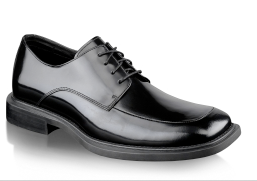
Photo credit: Kenneth Cole.
2.
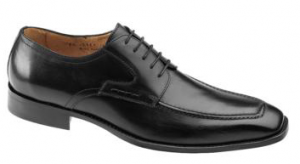
Photo credit: Johnston & Murphy.
Thin doesn’t mean wafer-thin. Notice that the sole of #2, is thin but provides enough thickness to still be comfortable. The shoe in #1 also has a thick lip caused by the sole extending substantially further out than the leather of the shoe. This became especially popular in the late 90’s and early 00s, and just creates a very clunky appearance. Compare this to #2, in which there is no discernible lip, instead it’s very clean and precise.
Shoe Point
Your shoe should not resemble something a jester would wear, as #3 is illustrating. You do not want the point to curl up. I’m not sure when or why this look became popular, but it looks ridiculous. Go for something that isn’t overly exaggerated, just a natural extension of the rest of the shoe, as in #4.
3.
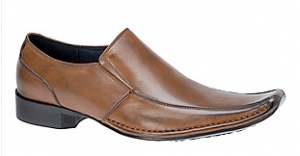
Photo credit: Aldo.
4.
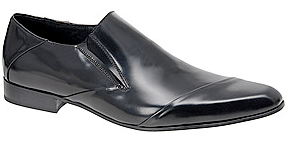
Photo credit: Aldo.
Also, avoid harsh, squared toe shoes that come across as too boxy (#5). Shoes with such clunky boxy points, are just too severe. You can still go with a square toed shoe, just make sure that the point is gradually made as in #6.
5.

Photo credit: Steve Madden.
6.
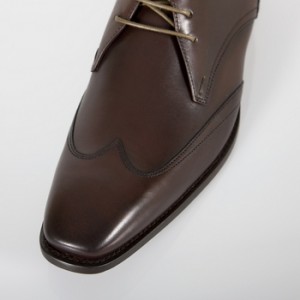
Photo credit: Paul Smith.
Tassles
If you’re a young guy (<60 yoa) you should not wear tassles. Ever. They’re old, and they make you look even older. If you like the traditional look and love Cordovan leather, go with a wingtip instead, just make sure it conforms to the above rules like #8. You’ll have a traditionally-inspired shoe, with a modern update.
7.
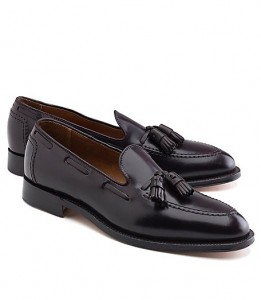
Photo credit: Brooks Brothers.
8.
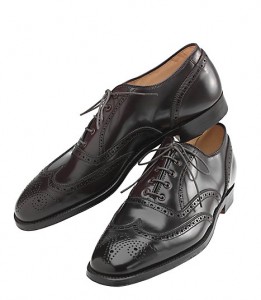
Photo credit: Brooks Brothers.
Casual shoes
There are way too many possibilities to list. But, if you’re wearing pants, shoes that you’d be comfortable wearing to the gym should not be on your feet. Here are just a select few that are casual, yet still keeping with the above rules – precise lines.
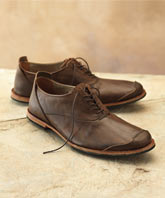
Photo credit: Timberland Boot Co.
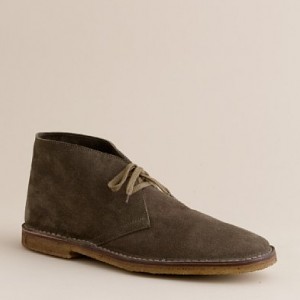
Photo credit: JCrew.
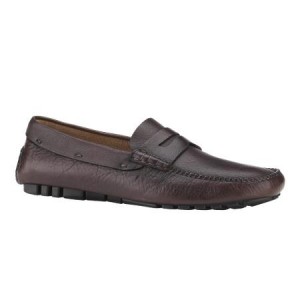
Photo credit: Cole Haan.
____
This post was purposefully kept sparse, and just touched on the absolute rules. There are way too many shoes, and occasions, to encapsulate all the rules in one post. Instead, I’ll be doing short, continual posts, on particular types of shoes that are cool and hip, that still conform to said rules (or if they break them, I’ll tell you why this is acceptable).
A final note: matching your shoes with your belt is a very good thing. There are only a few, select occasions where you need not do that, so don’t worry about them. This goes for texture/sheen as well as color. If you’re wearing distressed shoes, go ahead and throw on a slightly distressed belt. If they’re nice shiny shoes, go for one with a nice sheen on it as well.